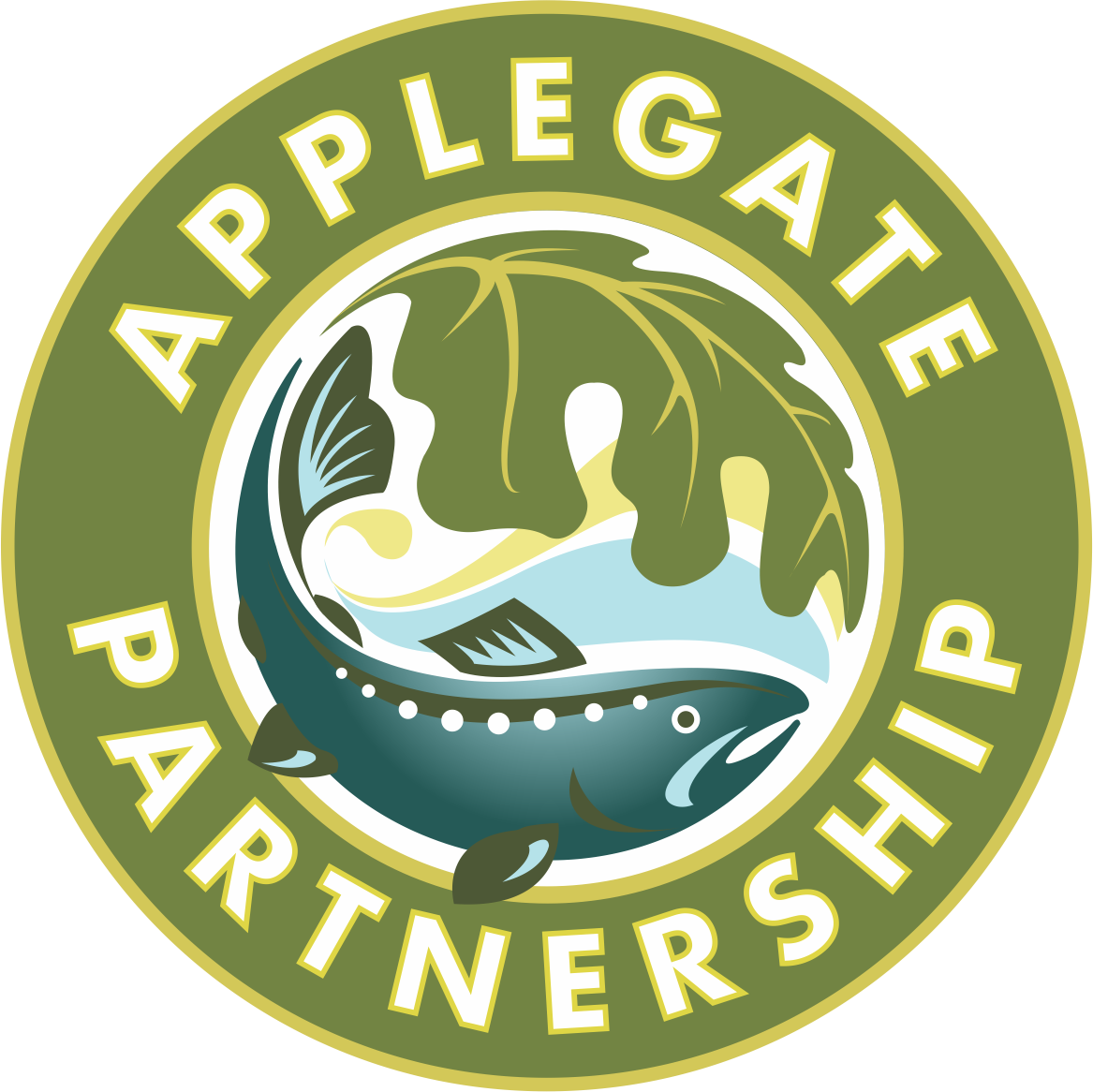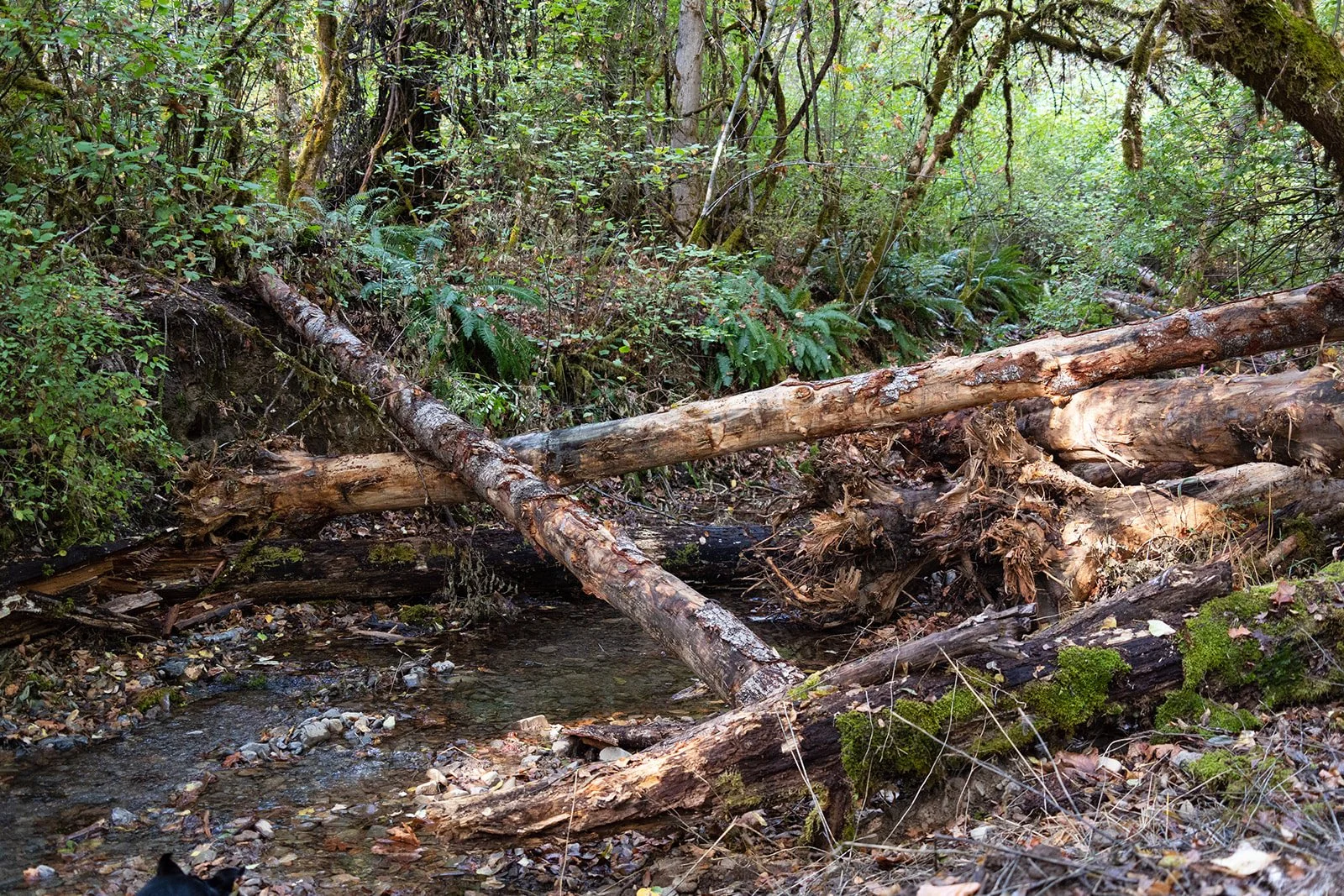
Habitat Restoration
APWC habitat restoration projects focus on improving instream and riparian conditions that support native fish and wildlife. We use techniques such as adding large wood structures, reconnecting side channels, and restoring natural stream function to enhance rearing and spawning habitat for salmon, while improving water quality and riparian health. These projects are carried out in partnership with landowners, agencies, and local volunteers throughout the Applegate watershed.
Our Habitat Restoration Projects
Cheney Creek Large Woody Debris & Vehicle Barrier Project
This project, completed in 2022, improved instream habitat and reduced the impact of unauthorized activities on a one mile section of Cheney Creek managed by the BLM. APWC and the BLM placed over 100 logs harvested from the Provolt Recreation Site into the creek to add sinuosity and complexity to the stream, improving conditions for fish, specifically Coho Salmon. The trash dumps along the creek were removed and the unauthorized roads were decommissioned through the placement of large logs and boulders and the installation of tank traps. Invasive species, such as Garlic Mustard, were also treated at the project site.
Provolt Recreation Site Large Woody Debris Project
Completed in 2025, this project enhanced Williams Creek by installing large wood structures that interact during high flows to slow water, improve fish habitat, and create basking areas for western pond turtles.
West Fork Evans Creek Large Woody Debris Project
APWC collaborated with the BLM, Wild Salmon Center, and a local contractor to improve salmon habitat in West Fork Evans Creek and its tributaries. Evans Creek and its tributaries are home to populations of federally protected coho salmon, Chinook salmon, steelhead, and Pacific lamprey. After a decade of planning and labor, the final phase of the project was completed in 2024. Over 10 miles of stream were restored with 192 LWD structures containing over 1,100 individual pieces of wood. This project is located in the Rogue watershed outside of the Applegate Basin.
Applegate Dam Gravel Augmentation Project
In partnership with OWEB, ODFW, and the U.S. Forest Service, APWC added spawning gravels below Applegate Dam in 2019 to restore habitat for salmon and steelhead where natural gravel recruitment is blocked by the dam.
Mungers Creek Large Woody Debris Project
Completed in 2025, the Mungers Creek LWD Project included the placement of logs and boulders to simulate the natural conditions and habitats that salmon and other aquatic organisms need to survive. Mungers Creek experienced high flows and scouring events which removed the natural obstacles that produce this habitat. More sites will be added to this project if funding allows.





